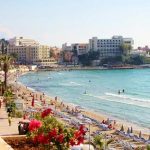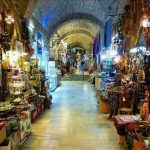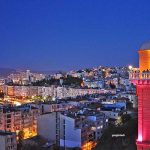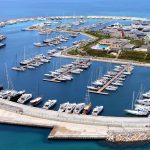In the city of Virgin Mary…
On October 18th, 1881, a French priest, the Abb Julien Gouyet of Paris, discovered a small stone building on a mountain overlooking the Aegean Sea and the ruins of ancient Ephesus in Turkey. He believed it was the house where the Virgin Mary had lived in the final years of her life on earth as described in the visions of the German nun Anne Catherine Emmerich (1774-1824), who had never been to Ephesus during her lifetime, published in detail in a book by Clemens  Brentano.His discovery was not taken seriously at the time but ten years later, in 1891, two Lazarist missionaries from Smyrna rediscovered the building, using the same source for a guide. It was then learned that the four-walled, roofless ruin had been venerated from time immemorial by the members of a distant mountain village who were descended from the Christians of Ephesus. They called it Panaya Kapulu (“Chapel of the Most Holy” see Panagia), believed it was there that she had died and had every year made a pilgrimage to the site on August 15th, the date on which the rest of the Christian world celebrated Mary’s Assumption from Jerusalem.The discovery in fact revives and strengthens a constant and ancient Christian tradition, ‘the tradition of Ephesus’, which has always competed with the ‘Jerusalem tradition’ concerning in particular the place of the Blessed Virgin’s passing from this world.
Brentano.His discovery was not taken seriously at the time but ten years later, in 1891, two Lazarist missionaries from Smyrna rediscovered the building, using the same source for a guide. It was then learned that the four-walled, roofless ruin had been venerated from time immemorial by the members of a distant mountain village who were descended from the Christians of Ephesus. They called it Panaya Kapulu (“Chapel of the Most Holy” see Panagia), believed it was there that she had died and had every year made a pilgrimage to the site on August 15th, the date on which the rest of the Christian world celebrated Mary’s Assumption from Jerusalem.The discovery in fact revives and strengthens a constant and ancient Christian tradition, ‘the tradition of Ephesus’, which has always competed with the ‘Jerusalem tradition’ concerning in particular the place of the Blessed Virgin’s passing from this world.
Click to see the greater photo… You have never been so close to history…
The city of Ephesus itself was founded as an Attic-Ionian colony in the 10th century BC on the Ayasuluk Hill, three kilometers from the center of antique Ephesus (as attested by excavations at the Seljuk castle during the 1990s). The mythical founder of the city was a prince of Athens named Androklos, who had to leave his country after the death of his father, king Kadros. According to legend, he founded Ephesus on the place where the oracle of Delphi became reality (“A fish and a boar will show you the way”). Androklos drove away most of the native Carian and Lelegian inhabitants of the city and united his people with the remainder. He was a successful warrior and, as king, he was able to join the twelve cities of Ionia together into the Ionian League.  During his reign the city began to prosper. He died in a battle against the Carians when he came to the aid of Priene, another city of the Ionian League. Androklos and his dog are depicted on the Hadrian temple frieze, dating from the second century. Later, Greek historians such as Pausanias, Strabo and the poet Kallinos, and the historian Herodotos however reassigned the city’s mythological foundation to Ephos, queen of the Amazons.
During his reign the city began to prosper. He died in a battle against the Carians when he came to the aid of Priene, another city of the Ionian League. Androklos and his dog are depicted on the Hadrian temple frieze, dating from the second century. Later, Greek historians such as Pausanias, Strabo and the poet Kallinos, and the historian Herodotos however reassigned the city’s mythological foundation to Ephos, queen of the Amazons.
Click to see the greater photo… Feel sun and sea on one of the best beaches in the world…

Kusadasi :
The city stands on a bay in the Aegean with the peninsula of Guvercin Ada sticking out into the sea at one end, and the mountain of Kaz Dagi behind.It is 90 km (56 mi) south of Izmir, the region’s largest metropolitan center. It is 71 km (44 mi) from the provincial seat of Aydin situated inland.
Cesme :
A coastal town and the center-town of the district of the same name in Turkey’s western-most end, on a promontory on the tip of the peninsula which also carries the same name and which extends inland to form a whole with the wider Karaburun Peninsula. It is a popular holiday resort and the district center, where two thirds of the district population is concentrated, is located 85 km. west of Izmir, the largest metropolitan center in Turkey’s Aegean Region, the road connection between the two cities being assured by a recently-built six-lane highway.








